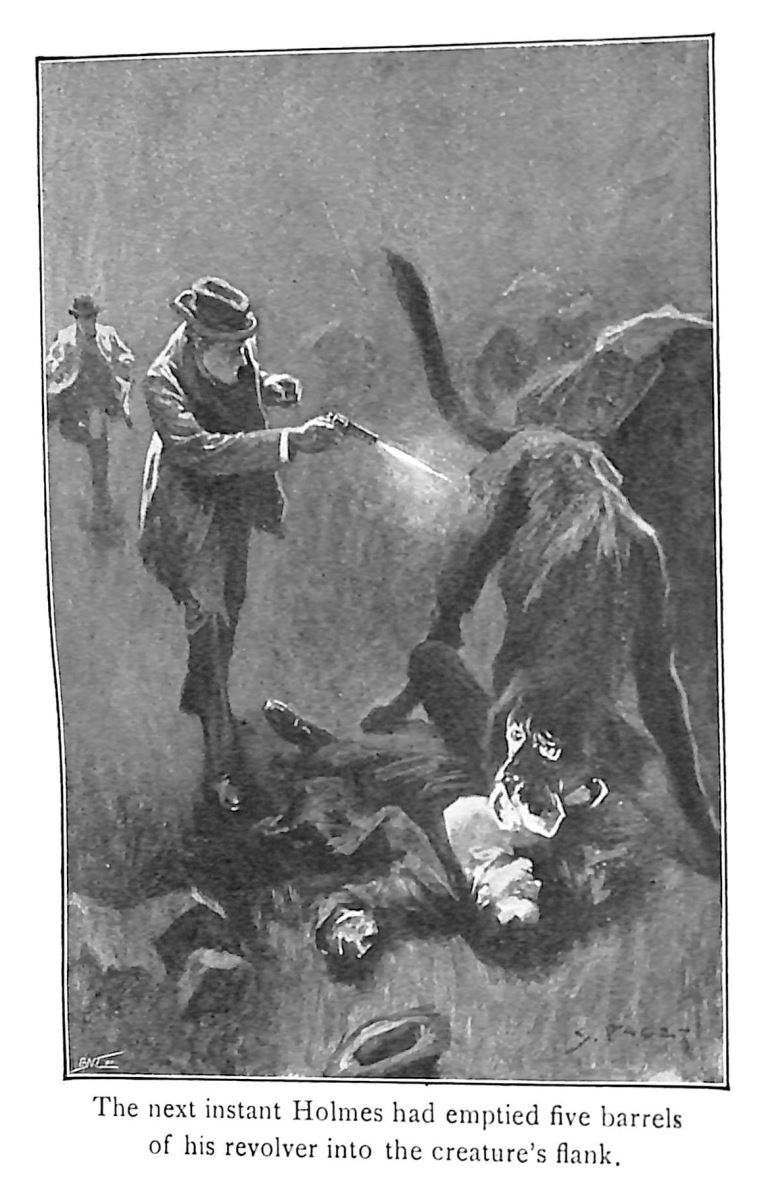Demonic Dogs And Villainous Squires.
The Hound of the Baskervilles is among the best of the Sherlock Holmes stories. It has been published in many editions, and translated into many different languages. This classic tale has also been adapted for film, television, stage and radio.
However, what is less well known is that the story was inspired by local folklore in the area of Dartmoor. Other more widespread legends may have contributed to it too.
In March, 1901, Arthur Conan Doyle was staying at Cromer in Norfolk. He was there with his friend, the noted journalist and editor Bertram Fletcher Robinson. Arthur Conan Doyle later wrote that,
“ One raw Sunday afternoon, Robinson began telling legends of Dartmoor, one of which concerned a spectral hound. “
Bertram Fletcher Robinson later wrote of Conan Doyle; “ He listened eagerly to my stories of the ghost hounds, of the headless riders, and of the devils that lurk in the hollows. “ Fletcher Robinson had grown up listening to such legends. He also lived on the borders of Dartmoor.
In a letter written in 1907, Arthur Conan Doyle stated that The Hound of the Baskervilles, “ …was really based on nothing save a remark of my friend Fletcher Robinson’s that there was a legend about a dog on the moor connected with some old family. “
The model for the villainous Sir Hugo Baskerville in The Hound of the Baskervilles is thought by many to be Squire Richard Cabell. In the 17th century, Richard Cabell was Lord of the Manor of Brook in the parish of Buckfastleigh. Cabell was by all accounts a bad lot. According to one legend he sold his soul to the Devil. Another claims that he murdered his wife after accusing her of adultery.
When Richard Cabell died in 1677, it was said that a pack of howling black hounds, breathing fire and smoke, surrounded his Manor House. Cabell also allegedly leads a pack of demonic hounds across Dartmoor on the anniversary of his death.
After his death a large stone was placed on Squire Cabell’s head, to prevent him from rising from his grave. A building known locally as ‘ The Sepulchre ‘ was also erected over his grave. Local children used to dare each other to approach the locked door to Richard Cabell’s tomb. Any child brave enough to do so would circle the tomb 13 times. They would then insert a finger in the keyhole of the door, to see if Richard Cabell would gnaw it !
There are a number of legends about demonic black dogs in British folklore. It is possible that Arthur Conan Doyle was also influenced by these. After all, Conan Doyle and Fletcher Robinson were holidaying in Norfolk, which is the stamping ground of the legendary hellhound, Black Shuck. This huge beast is said to have glowing red eyes, and haunts rural areas of Norfolk and Suffolk.
Originally published in The Strand Magazine as a serial in 1901, The Hound of the Baskervilles appeared in book form soon after. In the preface to the 1902 edition, Arthur Conan Doyle wrote:
My Dear Robinson,
It was your account of a West Country legend which first suggested the idea of this little tale to my mind.
For this, and for the help which you gave me in its evolution, all thanks.
Yours most truly,
A. Conan Doyle.
The contribution of Bertram Fletcher Robinson to The Hound of the Baskervilles has been somewhat forgotten over the years. It has become a footnote in literary history. But it is an important one because without it this classic story might never have been written.
END.
.jpg)

Related
Comments
Comments are disabled for this post.

 to add an item to your Itinerary basket.
to add an item to your Itinerary basket.





